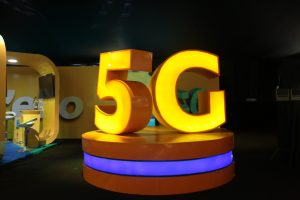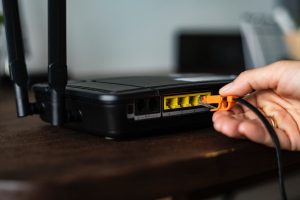We live in a connected world and expect to be able to get connected wherever we are. Of course, 4G and 5G networks enable connections to mobile cellular devices, and even laptops and tablets with inserted SIM cards, but reception varies due to being inside an old building or even in an out-of-town location where no mobile cellular signal is available. As Anthony Karcz, writing for Forbes in his article, “The Best Portable WiFi Hotspots for Travel” says: “Your laptop might be a productivity machine, but without a wireless network, your projects are stuck wherever you are. The impulse is to just trust whatever network you have available to you, no matter where you are, but that leads to all kinds of complications.” These complications are that the network may be open and anyone with the will can hack into your data, so not just any WiFi is suitable, only a secure WiFi system that is password protected is suitable.
People’s Expectations
People expect that when they are in a building, coffee shop, hotel or restaurant that there is free WiFi available for them to use, but this is not always the case. When it comes to attending an event, such as an exhibition, conference, wedding, party or tutorial, people expect a good secure WiFi signal at a reasonable speed, even though there may be hundreds of people all connected. Event organizers should not rely on the mobile cellular networks for connection as the service can suffer when there are lots of delegates or attendees and downloading data using such networks may not be free. Again, ] reception inside large buildings is often variable or non-existent. This issue can be compounded when the delegates and attendees at a conference or exhibition have paid an admission fee. What an event organizer does not want is a roasting on social media because of their poor, or non-existent WiFi. That is why event organizers want secure, fast and reliable WiFi service at their events so that the only talking point on social media is about the event and not the WiFi.

Event WiFi Bandwidth
Obviously, when organizing an event, it is best practice to work out how many users will be present, bearing in mind that some people have smartphones and tablets and even WiFi watches. The amount of event WiFi nyc bandwidth required could be measured in gigabits per second rather than megabits. It is best to allow at least 10 Mbit/s for high bandwidth users and the same bandwidth for low bandwidth users. Assessing which of the attendees are high bandwidth users is not easy, however, if it is an exhibition, it is likely that the vendors will want to be connected back to their servers etc. at their business premises. The crowd will be a mixture of user types with some just browsing and using email, some might be casually using social media, but others might be running heavy downloads. Mark Sparrow in his Forbes article, “Is Your Wi-Fi Making You Wired? A Mesh Network Can Banish Those Wireless Dead Spots”, says, “Everything from our smartphones to our printers and TVs rely on WiFi to connect to a router and the outside world.” So, an event organizer must take into account all the WiFi connected TVs and printers on the exhibition stands.
Where to Put WiFi
It can become expensive if WiFi is put into such areas as storage rooms, toilets and other spaces where attendees do not spend a great amount of time. WiFi should be available in the exhibition and conference areas, in breakout rooms and in hallways, eating areas and lounge areas. Placing the WiFi hotspots/access points does require careful planning and the WiFi provider should be able to know where to place these, based on previous experience. Access points will normally cover an area of around 3,000 square feet with each access point serving up to 100 people depending on their usage. It is also possible to have an area where there is plenty of bandwidth and then heavy WiFi users can be directed to this area.
It is best to arrange contracts with the WiFi provider at an early stage and to make sure the WiFi system is of high commercial grade and offers dual frequencies. Once contracts have been agreed, fixing the WiFi key and passwords needs to be completed so that this information is available to attendees at an early stage. It is also a good idea to have a backup plan in place should the WiFi system have issues on the day.
Conclusion
When organizing an event, it is best to negotiate the WiFi contract as early as possible based on the estimated bandwidth required for the attendees, exhibitors and other staff as well as for TVs and printers and any other network equipment that needs connectivity. A fast reliable service must be installed so that there are no adverse comments on social media, if this happens it will affect future business, so it is a good idea to have a backup plan in place.





